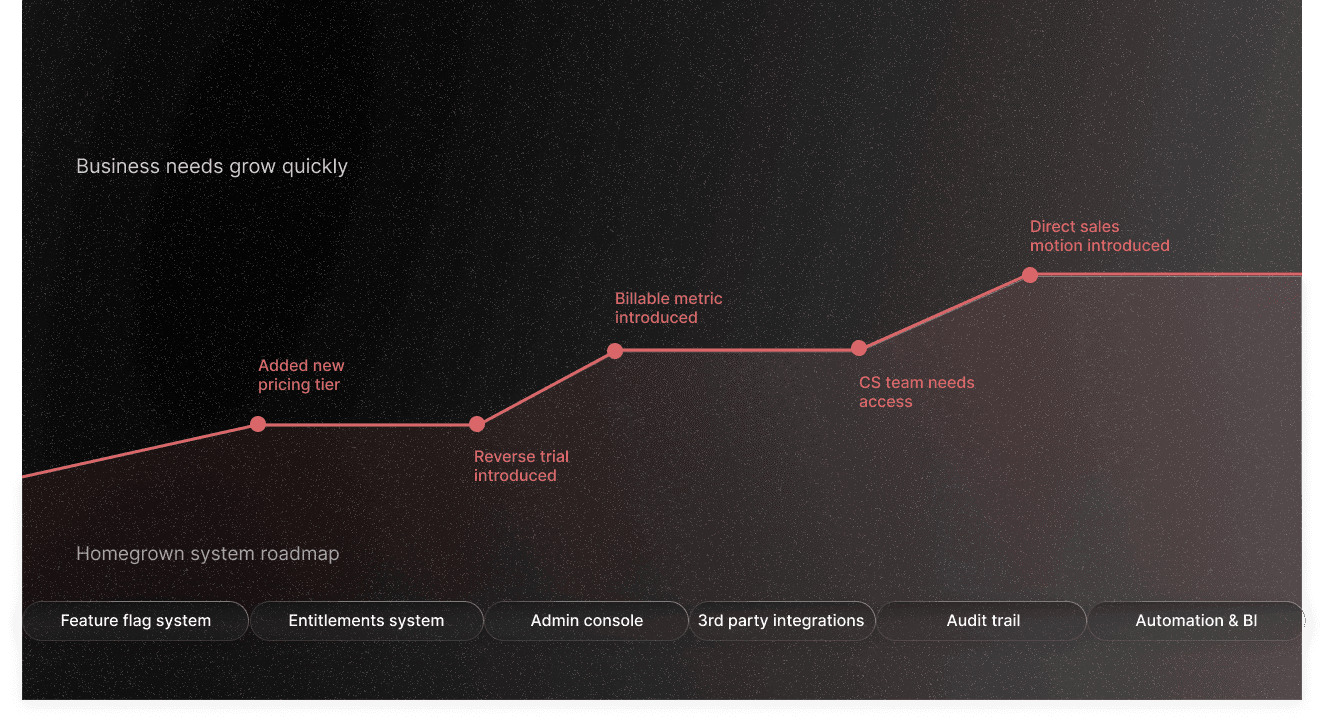"Schematic has transformed how we manage our pricing and packaging. The ability to iterate quickly and provide our customers with a seamless experience has been invaluable." — Brian Wleklinski, Senior Manager, Growth & Digital, Automox
Customer Profile
Automox is a leader in endpoint management solutions, providing IT professionals with a comprehensive tool to automate and secure endpoints across multiple operating systems. The Automox solution simplifies patching, configuration, and device control for IT teams.
The company is a high-growth B2B SaaS company, operating in a massive ITOps market, and backed by world-class investors like Insight Venture Partners, Koch, TechOperators, Crowdstrike co-founder, Dmitri Alperovitch, and Tenable Founder, Ron Gula.
Automox has scaled thanks to impressive product market fit and easy-to-use software. But like many great companies, it’s inability to flexibly control pricing & packaging as the business has grown and as its product has become more mature has left significant ARR on the table, according to Evan Kiely, Director of FP&A.
Before Schematic
Over the last 4 years, Automox had largely not evolved pricing & packaging.
The lack of investment in pricing & packaging wasn’t the result of strategic or executive neglect, but instead the result of what Ulrik Lehrskov-Schmidt has called commercial debt, and what Automox’s co-founder & former CEO Jay Prassl describes as “pricing & packaging sclerosis.”
As the business scaled, it launched new GTM motions (sales-led, product-led, channel-led, marketplaces, etc), it moved up-market where deals were customized, and the number of SKUs proliferated, and it invested in expanding its product offerings to sell new modules as add-ons.
As the business evolved, the homegrown system to manage contracting, product packaging, authorization, feature flagging, and billing, grew organically and became surrounded by a fragmented patchwork of tools, custom glue, and manual processes.
The system wasn’t built for flexibility or to support metering and modular packaging. Pricing & packaging logic was hard-coded in application code, and the result was significant technical and systems debt that required constant maintenance and attention from engineers and product managers. It also resulted in delayed monetization initiatives, such as new tiers, add-ons, and custom configuration.
As Automox’s CMO Justin Talerico said, “we’ve delayed pricing & packaging studies for years, because even if we had a data-driven recommendation, we couldn’t implement any of the proposed changes in our product.”
Challenges
Like many SaaS companies, Automox built homegrown monetization systems – feature flags, hard-coded entitlements that lived in config files, admin consoles, integrations with business systems, multiple billing systems, disparate product catalogs, and the list went on.

“Our system was built using a combination of two different billing tools: one for e-commerce and another for sales-led motions. This setup resulted in redundant plans and inconsistent entitlements based on various states of customers. The complexity of this system meant that critical investments such as in onboarding, in activation, and in billing, were often hard to prioritize or had long lead times. The teams supporting monetization were tasked with numerous manual and disconnected processes, which were not only time-consuming but also prone to errors.” - Brian Wleklinski
There were several challenges Automox was running into:
Lack of a robust & granular entitlement service
Inflexible data model and usage tracking
An explosion of states and exceptions to handle
None of the systems were well connected
That resulted in:
Delayed monetization initiatives: Launching new pricing tiers took over three months, involving multiple teams and in a much slower time to market.
High product opportunity costs: Material engineering resources were diverted to maintain the homegrown system, reducing the focus on core product development.
Suboptimal pricing & packaging: Difficulty in keeping up with the company’s growth and evolving internal and external demands, leading to pricing models that left revenue on the table.
Inconsistent user experience: Customers on older plans faced issues with limited access to features and billing visibility, resulting in increased churn and lower adoption rates.
Solution
Automox chose Schematic to centralize management of pricing and packaging and empower non-technical stakeholders to own monetization with minimal engineering involvement.
Schematic provided robust feature management capabilities for entitlements, limits, and plans, a centralized product catalog, and embedded UI components such as pricing tables, usage trackers, and upgrade modals. These capabilities enabled Automox to automate manual processes and integrations, reduce errors, and improve the speed at which the company could iterate on pricing & packaging and support its evolving monetization strategy. Moreover, it reduced reliance on engineering to move monetization initiatives forward.
"We chose Schematic because it provided the flexibility to launch, package, meter, and monitor features from one place without having to continue maintaining a homegrown system or constantly involve engineering." - Brian Wleklinski
Outcomes
Deploying Schematic resulted in:
Reduced time to market: Decreased the time required to launch new pricing tiers by 75%, allowing for more agile responses to market demands.
Renewed focus on core product value: Eliminated the need for a homegrown system and materially reduced the amount of application code to maintain, freeing up engineering resources to focus on core product rather than internal tool maintenance.
Improved customer experience: Provided a more consistent and transparent user experience, reducing support requests and increasing customer satisfaction.
Value Delivered
By adopting Schematic, Automox turned pricing and packaging into a strategic advantage rather than a liability supported by a patchwork of tools, code, and processes. It saved Automox 2 full-time engineers and enabled the business to iterate much faster on monetization initiatives that had previously lived in the backlog.
Moreover, the partnership has catalyzed a series of opportunities to extend the partnership further.